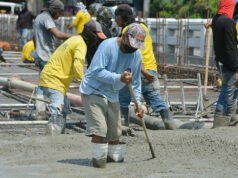JICA vows support for local disaster programs
The Japan International Cooperation Agency (JICA) on Wednesday said it would continue to support the Philippine government’s disaster management programs.
“The pandemic showed us how structures and systems can be affected severely,” JICA Philippines Senior Representative Ayumu Ohshima said in a statement.
“We aim to continue working with the Philippines towards strengthening disaster risk reduction and management. This way, people become better prepared in addressing the gaps and impact of future natural disasters in their lives,” he added.
The government got a ¥50-billion (P23 billion) standby loan from JICA last month, which will be released if a natural disaster, including pandemics, occurs. The lender has given the country $918 million (P45 billion) for the state’s pandemic response.
Japan, through its financing arm JICA, is the country’s top source of foreign funding with $10.082 billion of outstanding official development assistance (ODA) today. Among projects that JICA is supporting, nine are for disaster management.
These include several flood risk management initiatives for the Cagayan river, Tagoloan river and Imus river and Cagayan de Oro river; a flood control project in Cavite City; and channel improvement of the Pasig-Marikina river.
It will also fund a feasibility study on a flood control and drainage project in Davao City, creation of a system that will monitor and share information about the weather; and a project that will improve flood forecasting and warning systems for the Cagayan de Oro river basin.
There are also projects on disaster risk reduction and enhanced weather observation, forecast, warning and information distribution.
JICA has extended more than ¥345 billion (P159.2 billion) for the country’s disaster risk reduction efforts since 1979.
Extreme weather events have increased dramatically in the past 20 years, taking a heavy human and economic toll worldwide, and are likely to wreak further havoc, the United Nations (UN) said last week.
China (577) and the United States (467) posted the highest number of disaster events from 2000 to 2019, followed by India (321), the Philippines (304) and Indonesia (278), the UN said in a report. Eight of the top 10 countries were in Asia.
About 7,348 major disaster events were recorded globally, claiming 1.23 million lives, affecting 4.2 billion people and causing $2.97 trillion in economic losses during the two-decade period.
Drought, floods, earthquakes, tsunamis, wildfires, and extreme temperature events caused major damage.
Heatwaves and droughts will pose the greatest threat in the next decade, as temperatures continue to rise due to heat-trapping gases, experts said.
The Philippines is among the most disaster-prone countries in the world based on the World Risk Index. — Beatrice M. Laforga



